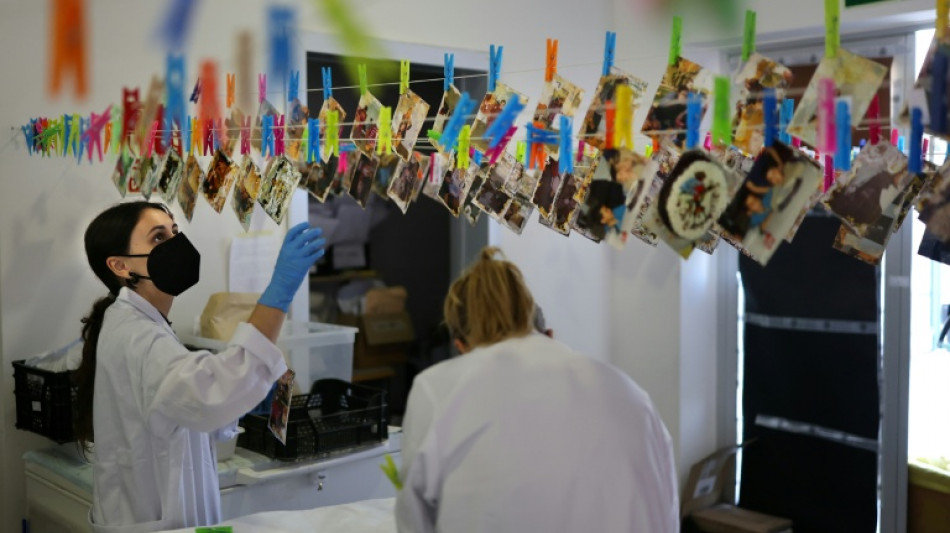
-
 Trump orders marijuana reclassified as less dangerous drug
Trump orders marijuana reclassified as less dangerous drug
-
Rams ace Nacua apologizes over 'antisemitic' gesture furor

-
 McIlroy wins BBC sports personality award for 2025 heroics
McIlroy wins BBC sports personality award for 2025 heroics
-
Napoli beat Milan in Italian Super Cup semi-final

-
 Violence erupts in Bangladesh after wounded youth leader dies
Violence erupts in Bangladesh after wounded youth leader dies
-
EU-Mercosur deal delayed as farmers stage Brussels show of force
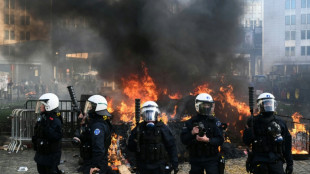
-
 US hosting new Gaza talks to push next phase of deal
US hosting new Gaza talks to push next phase of deal
-
Chicago Bears mulling Indiana home over public funding standoff

-
 Trump renames Kennedy arts center after himself
Trump renames Kennedy arts center after himself
-
Trump rebrands housing supplement as $1,776 bonuses for US troops

-
 Harrison Ford to get lifetime acting award
Harrison Ford to get lifetime acting award
-
Trump health chief seeks to bar trans youth from gender-affirming care

-
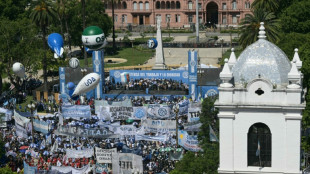 Argentine unions in the street over Milei labor reforms
Argentine unions in the street over Milei labor reforms
-
Trump signs order reclassifying marijuana as less dangerous

-
 Famed Kennedy arts center to be renamed 'Trump-Kennedy Center'
Famed Kennedy arts center to be renamed 'Trump-Kennedy Center'
-
US accuses S.Africa of harassing US officials working with Afrikaners

-
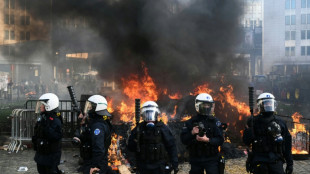 Brazil open to EU-Mercosur deal delay as farmers protest in Brussels
Brazil open to EU-Mercosur deal delay as farmers protest in Brussels
-
Wounded Bangladesh youth leader dies in Singapore hospital

-
 New photo dump fuels Capitol Hill push on Epstein files release
New photo dump fuels Capitol Hill push on Epstein files release
-
Brazil, Mexico seek to defuse US-Venezuela crisis

-
 Assange files complaint against Nobel Foundation over Machado win
Assange files complaint against Nobel Foundation over Machado win
-
Private donors pledge $1 bn for CERN particle accelerator
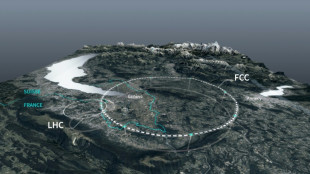
-
 Russian court orders Austrian bank Raiffeisen to pay compensation
Russian court orders Austrian bank Raiffeisen to pay compensation
-
US, Qatar, Turkey, Egypt to hold Gaza talks in Miami

-
 Lula open to mediate between US, Venezuela to 'avoid armed conflict'
Lula open to mediate between US, Venezuela to 'avoid armed conflict'
-
Brussels farmer protest turns ugly as EU-Mercosur deal teeters
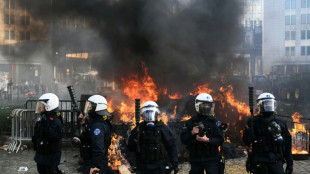
-
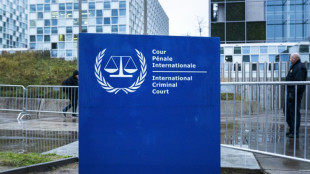 US imposes sanctions on two more ICC judges for Israel probe
US imposes sanctions on two more ICC judges for Israel probe
-
US accuses S. Africa of harassing US officials working with Afrikaners

-
 ECB holds rates as Lagarde stresses heightened uncertainty
ECB holds rates as Lagarde stresses heightened uncertainty
-
Trump Media announces merger with fusion power company

-
 Stocks rise as US inflation cools, tech stocks bounce
Stocks rise as US inflation cools, tech stocks bounce
-
Zelensky presses EU to tap Russian assets at crunch summit

-
 Pope replaces New York's Cardinal Dolan with pro-migrant bishop
Pope replaces New York's Cardinal Dolan with pro-migrant bishop
-
Odermatt takes foggy downhill for 50th World Cup win

-
 France exonerates women convicted over abortions before legalisation
France exonerates women convicted over abortions before legalisation
-
UK teachers to tackle misogyny in classroom

-
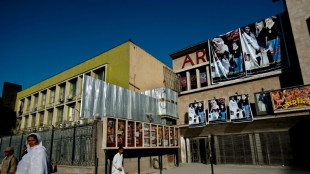 Historic Afghan cinema torn down for a mall
Historic Afghan cinema torn down for a mall
-
US consumer inflation cools unexpectedly in November

-
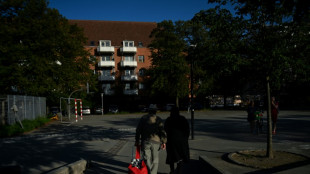 Danish 'ghetto' residents upbeat after EU court ruling
Danish 'ghetto' residents upbeat after EU court ruling
-
ECB holds rates but debate swirls over future

-
 Pope replaces New York's Cardinal Timothy Dolan with little-known bishop
Pope replaces New York's Cardinal Timothy Dolan with little-known bishop
-
Bank of England cuts interest rate after UK inflation slides

-
 Have Iran's authorities given up on the mandatory hijab?
Have Iran's authorities given up on the mandatory hijab?
-
Spain to buy 100 military helicopters from Airbus

-
 US strike on alleged drug boat in Pacific kills four
US strike on alleged drug boat in Pacific kills four
-
Thailand strikes building in Cambodia's border casino hub
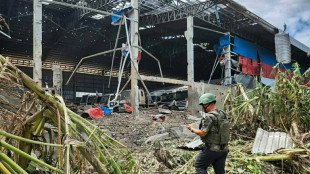
-
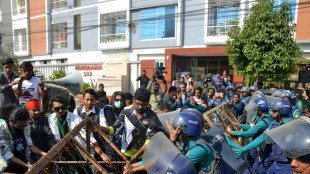 Protests in Bangladesh as India cites security concerns
Protests in Bangladesh as India cites security concerns
-
European stocks rise before central bank decisions on rates

-
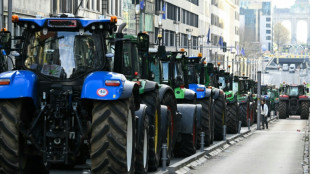 Tractors clog Brussels in anger at EU-Mercosur trade deal
Tractors clog Brussels in anger at EU-Mercosur trade deal
-
Not enough evidence against Swedish PM murder suspect: prosecutor


After deadly floods, Spaniards fight to save photos
Hundreds of photographs hang to dry at a laboratory, fragile reminders of birthday celebrations and summer vacations nearly swept away by last year's deadly floods in Spain.
But thanks to a university-led initiative, many of these memories have been rescued from ruin.
Decked in white lab coats and masks to protect themselves from mould and other contaminants, a group of students at a laboratory at Valencia's Polytechnic University carefully clean and restore photos.
A sign next to a pile of mud-stained photo albums that sits by the entrance warns: "Do not touch. Contaminated material."
Nearby, a pile of empty photo albums still bears traces of the mud that swept through parts of the Mediterranean region of Valencia during the torrential rains of October 29, 2024, killing more than 200 people and destroying thousands of homes.
In the chaos that followed, a wave of volunteers rushed to help residents clean up the 800,000 tonnes of debris left by Spain's deadliest natural disaster in a generation and salvage what they could.
"We started getting calls from students who were helping in the affected areas and noticed that entire albums of photographs were being thrown away," said Esther Nebot, a professor at the university and the co-director of the project Salvem les fotos ("Let's Save the Photos").
"Those same students began collecting photographs in their backpacks," she added, pointing to the freezers where the damaged images were stored before being painstakingly restored.
- 'Incredibly satisfying' -
Since the project began, roughly 340,000 images have passed through the lab.
Volunteers, students, donors and professors have restored about 75 percent of them.
"The disaster caused enormous losses at the documentary and historical level, and above all at the social level," Nebot said.
"Many objects don't have economic value, or even historical significance, but they carry immense emotional weight."
Using a small brush and a bucket of increasingly murky water, doctoral student Ruth Acuna delicately cleans a black-and-white photograph, faintly showing the portrait of a woman.
The 25-year-old, who has been with the project since the beginning, said she was aware of the responsibility of handling the memories of families who have already lost so much.
"Sometimes you see a photo and think, 'this won't survive,' and suddenly it comes out perfect," she said. "It's incredibly satisfying."
- 'Cried a lot' -
At a nearby table, other students carefully dismantle warped albums or disinfect and clean faded photographs, which were then hung to dry.
The most delicate prints, mostly in black and white, are flattened between cardboard sheets to prevent curling.
Some images are so damaged that faces are nearly unrecognisable. Others, however, have begun to tell fragments of life once more.
"It's very rewarding to clean photos and, especially when they're badly damaged, see a face emerge," said student Andrea Baldwin, gently wiping a photo with cotton.
"It fulfils you to know families can see these memories again together."
In an adjacent room, two students digitise and categorise the images, preparing them to be returned to their owners in a format similar to their original albums.
Nebot, the co-director of the project, said the moment when restored photos are returned to families -- some still without homes -- are often very emotional.
"We have cried a lot," she said.
"We set aside time to show them how we handled their photos, and it's also a way to thank them for their trust."
O.Johnson--AMWN
